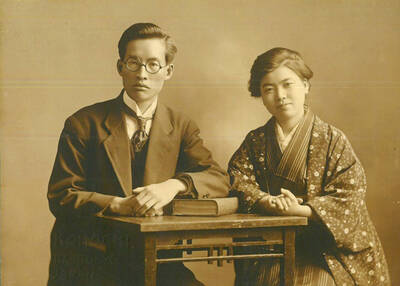A NETBOOK DRESSED UP IN DISNEY, WITH PARENTAL CONTROLS
The Disney NetPal from Asus (US$350, coming in early next month) is a beefed-up Eee PC Netbook with thicker hinges, a spill-proof keyboard and onboard parental controls, and no shortage of Disney-themed frosting.
Once you get past the mouse-ear-shape Web cam, this is really just a typical Intel Atom-powered Windows XP netbook. There are three USB ports and an SD slot, a VGA graphics port for school reports and a headphone jack. The Wi-Fi/Webcam combination could make Skyping with a grandparent an option.
The case comes in pink (aka Princess Pink) or blue, and there are two hard-drive options, either the 160GB model or a more shock-resistant 16GB solid-state drive model.
The Netpal has extra online security features, so you can decide what your child sees through the customizable Disney desktop. A scheduler, hidden behind a password, lets you decide which games your child can play and when. If you want to limit your child’s time with Webkinz or Free Realms to after school, and make it inaccessible at bedtime, that’s your call.
A CAMERA THAT LAUGHS AT POOLSIDE MISHAPS
Pentax adds to the lineup of swimming snap-shooters with its new Optio W80, which can withstand a dunk off the deep end down to 5m. It can shoot underwater photos and high-definition video for up to two hours, according to its maker.
The Optio W80 is also built ruggedly enough, its maker says, to handle dust, temperatures down to minus 10˚C and drops of up to 90cm.
Pentax has been poolside since 2003, when it introduced its first waterproof camera (the Optio W80 is an update of last year’s Optio W60). Today, the rugged camera market has expanded to include models like the Fujifilm Finepix 233WP, Olympus Stylus Tough 8000, Canon PowerShot D10 and the Panasonic Lumix DMC-TS1.
The new Pentax is at the high end of the price scale. But the 12.1-megapixel Optio W80 has some nice specs, including a 5X lens, the ability to capture high-definition video, image-stabilization technology and face-recognition technology.
The Optio W80 will come in a choice of red, gray or blue when it hits stores this month.
THE LAPTOP THAT BECOMES YOUR BLU-RAY DVD PLAYER
It was exactly three years ago, on June 25, 2006, that Samsung shook up the home entertainment category by shipping the industry’s first Blu-ray disc player, the BD-P1000.
The price was US$1,000, a princely sum in those days. Today, that’s still a lot of money.
Consider, then, the release this month of a Sony Vaio notebook computer for US$880 that plays Blu-ray discs and includes HDMI output for TVs. The specs of the notebook, the Vaio NW, is in line with the competition: Intel Core 2 Duo processor, abundant connectivity options and what looks to be an excellent 15.5-inch wide-screen display.
Some might call the NW a halo product, but if you put the NW in the proper context, it starts to make some sense. Panasonic recently announced the availability of an US$800 portable Blu-ray player.
But Sony counters with an interesting proposition: If you were going to spend US$800 on a portable Blu-ray player, why not drop an extra $80 and get a computer too?
A PRINTER THAT NAVIGATES DIRECTLY TO THE WEB, NO PC NEEDED
It’s hard to get excited about a new printer, but the new Hewlett-Packard PhotoSmart Premium with TouchSmart Web might be an exception.
The printer (available this fall) has a Web user interface that connects to your PCs and the Web via built-in Wi-Fi. Wireless printing is nothing new, but the way that the printer directly connects to the Web to print photos, coupons, maps, event tickets and more is head-turning.
The printer is an all-in-one device that prints, faxes, copies and scans. You navigate the TouchSmart Web feature via a 4.33-inch touch-screen control panel that has an unusually intuitive interface.
Using TouchSmart Web, you can connect directly to Snapfish (the online photo-sharing site that HP owns) to print photos from the site. You can also plug a memory card into the printer and upload to your Snapfish account directly from the printer, no computer necessary.
The printer even lets you view trailers of movies from DreamWorks on its LCD, although it seems unlikely that anyone would choose to do that. More useful: You can download and print coloring pages for the children from DreamWorks.

In the next few months tough decisions will need to be made by the Taiwan People’s Party (TPP) and their pan-blue allies in the Chinese Nationalist Party (KMT). It will reveal just how real their alliance is with actual power at stake. Party founder Ko Wen-je (柯文哲) faced these tough questions, which we explored in part one of this series, “Ko Wen-je, the KMT’s prickly ally,” (Aug. 16, page 12). Ko was open to cooperation, but on his terms. He openly fretted about being “swallowed up” by the KMT, and was keenly aware of the experience of the People’s First Party

Aug. 25 to Aug. 31 Although Mr. Lin (林) had been married to his Japanese wife for a decade, their union was never legally recognized — and even their daughter was officially deemed illegitimate. During the first half of Japanese rule in Taiwan, only marriages between Japanese men and Taiwanese women were valid, unless the Taiwanese husband formally joined a Japanese household. In 1920, Lin took his frustrations directly to the Ministry of Home Affairs: “Since Japan took possession of Taiwan, we have obeyed the government’s directives and committed ourselves to breaking old Qing-era customs. Yet ... our marriages remain unrecognized,

During the Metal Ages, prior to the arrival of the Dutch and Chinese, a great shift took place in indigenous material culture. Glass and agate beads, introduced after 400BC, completely replaced Taiwanese nephrite (jade) as the ornamental materials of choice, anthropologist Liu Jiun-Yu (劉俊昱) of the University of Washington wrote in a 2023 article. He added of the island’s modern indigenous peoples: “They are the descendants of prehistoric Formosans but have no nephrite-using cultures.” Moderns squint at that dynamic era of trade and cultural change through the mutually supporting lenses of later settler-colonialism and imperial power, which treated the indigenous as

Standing on top of a small mountain, Kim Seung-ho gazes out over an expanse of paddy fields glowing in their autumn gold, the ripening grains swaying gently in the wind. In the distance, North Korea stretches beyond the horizon. “It’s so peaceful,” says the director of the DMZ Ecology Research Institute. “Over there, it used to be an artillery range, but since they stopped firing, the nature has become so beautiful.” The land before him is the demilitarized zone, or DMZ, a strip of land that runs across the Korean peninsula, dividing North and South Korea roughly along the 38th parallel north. This